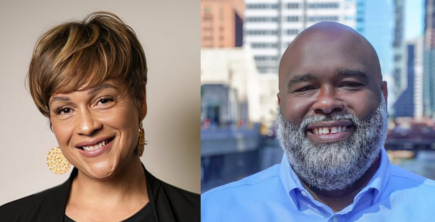
Our Community
The Talent Agenda is a monthly column where Rusty Stahl–Idealist board member and joint fellow at the Tides Foundation and the Research Center for Leadership in Action at NYU Wagner–will share his thoughts on how organizations and foundations can do more to support the careers and development of nonprofit professionals.
Photo credit: Leo Reynolds, Creative Commons/Flickr
Nonprofits employ 13.5 million people, making the sector the third-largest private workforce in the United States. During the recession, jobs at nonprofits grew by 2% while for-profit jobs declined by 4%. And nonprofits are still hiring. As we grow, nonprofits face increasingly complex management environments and endure ongoing pressure to provide more services to communities in the face of budget cuts.
Given the size, scope, and importance of our sector, we often wonder who will lead and champion our work. However, while we have talked at length about a ‘leadership crisis’ caused by massive Baby Boomer retirements, this has not yet happened. The Great Recession and the lack of post-retirement opportunities to contribute have encouraged Boomers to stay put. This, in turn, has created a different kind of challenge: a bottleneck on the nonprofit leadership highway.
In this context, the support of social-change professionals is more important than ever. Baby Boomers are rethinking retirement and exploring new ways to contribute; Generation X is reaching middle and upper management; and the incredibly diverse Millennial generation is entering and navigating the workforce in large numbers. These sweeping cultural and demographic shifts give new urgency to the perennially under-capitalized systems of nonprofit recruitment, retention, and retirement.
Rather than wringing our hands about a hypothetical “leadership deficit” in nonprofits, the millions of professionals in the nonprofit workforce offer an important asset to the field: human capital. It is in the enlightened self-interest of funders, policy-makers, nonprofit boards, and executives to invest in nonprofit talent for short-term productivity, mid-term morale, and long-term endurance.
A new way of thinking about talent
My column on Idealist Careers will focus on how to create a deep and diverse bench of nonprofit leadership talent. I believe funders can accomplish this through a new framework that I call Talent Philanthropy. And nonprofit boards and executives can use talent-driven approaches to increase impact.
The funding community has a great responsibility—and a fantastic opportunity—to support the development and sustainability of nonprofit employees. After all, it is the nonprofit workforce that conceives of and makes real the project and program ideas that foundations support.
And Talent Philanthropy will only work if nonprofit board members, executives, and fundraisers ask foundations and donors to specifically support strategic staff development and career support as part of their investments. If we don’t start asking, professional development will remain last-to-be-added and first-to-be-cut in budgets.
Nonprofit folks sacrifice their earning potential, time and more to advance the missions of their organizations. In return, our organizations and funders should commit resources for paid internships, coaching, training, education, sabbaticals, emeritus positions, and/or a variety of other resources. This will generally lead to increased morale and decreased burnout, which, as the business community has learned, leads to increased productivity and quality of work, happier employees, and better outcomes.
I look forward to engaging the Idealist community to make sure we ask for what we need to stay energized in our work and keep great talent in our field!
**
Cross-posted from the Idealist blog. Rusty Stahl is a Tides Fellow.

Read the stories and hear the voices of social change leaders fighting for justice.